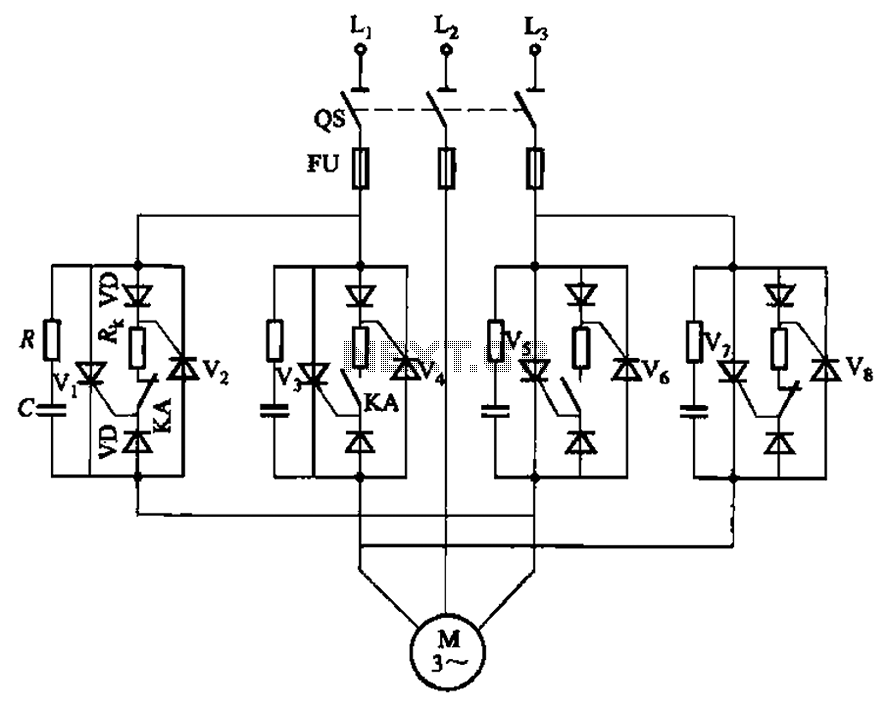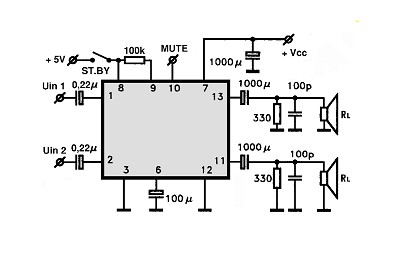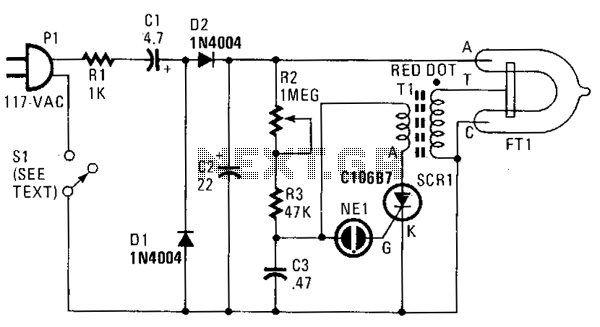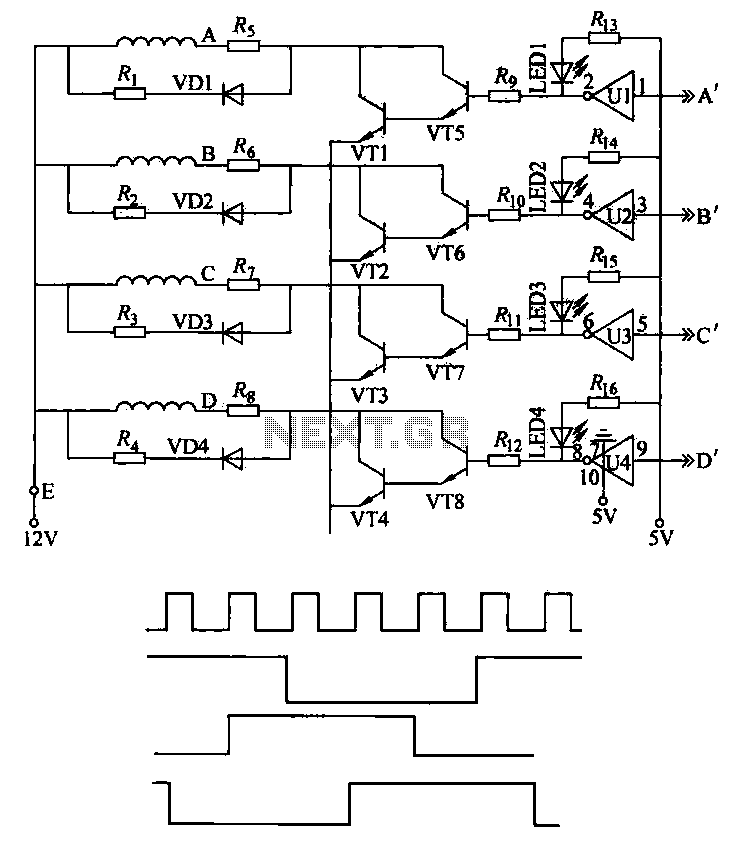
Three light control road construction warning light circuit
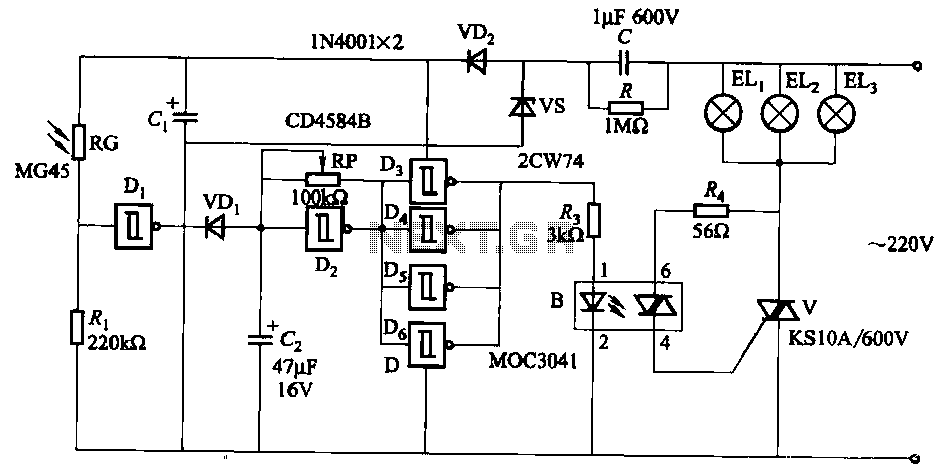
The circuit utilizes a CD4584B six Schmitt trigger integrated circuit (IC) with components Di and Ri forming a photometric circuit. D2, along with RP and C2, comprises an adjustable frequency ultra-low frequency oscillation device, where RP serves as an adjustment potentiometer. D3 to D6 are configured in parallel to function as an output controller. An opto-coupler B is employed to control the operation of a Triac. The regulator RP allows for modification of the blinking frequency.
The circuit design centers around the CD4584B, which contains six independent Schmitt trigger circuits. These circuits are characterized by their ability to provide clean digital signals from noisy inputs, making them ideal for applications requiring precise signal processing. The photometric circuit, formed by components Di and Ri, is responsible for detecting light levels and converting them into an electrical signal that can be processed by the Schmitt trigger.
The adjustable frequency oscillation device consists of D2, RP, and C2. Here, RP acts as a variable resistor, enabling the adjustment of the oscillation frequency. The capacitor C2 works in conjunction with the resistor to determine the timing characteristics of the oscillation, allowing for a wide range of ultra-low frequency outputs. This feature is particularly useful in applications such as blinking LED indicators or low-frequency sound generation.
D3 through D6 are connected in parallel to serve as an output controller, which effectively manages the output signal generated by the oscillation device. This configuration ensures that the output can drive a load with sufficient current, providing flexibility in controlling various electronic devices.
The inclusion of an opto-coupler B in the circuit design serves to isolate different sections of the circuit, enhancing safety and preventing interference between components. The opto-coupler allows for the control of a Triac, which is a type of semiconductor device used for switching and controlling power in AC circuits. By using the opto-coupler to trigger the Triac, the circuit can effectively manage larger loads while maintaining the integrity of the control signals.
Overall, the design allows for dynamic control of blinking frequencies through the adjustment of RP, making it suitable for a variety of applications in lighting and signal processing. The combination of Schmitt triggers, adjustable oscillators, and opto-isolation provides a robust framework for developing reliable electronic circuits.It uses CD4584B six Schmitt trigger IC (Di ~ Ds). Wherein Di and Ri, RG composition photometric circuit, D2 and RP, C2 composed of adjustable frequency (adjustment potentiometer RP) ultra-low frequency oscillation device, D3 ~ D6 in parallel as output controller. Opto-coupler B control Triac V work. Regulator RP, can change the blinking frequency.
The circuit design centers around the CD4584B, which contains six independent Schmitt trigger circuits. These circuits are characterized by their ability to provide clean digital signals from noisy inputs, making them ideal for applications requiring precise signal processing. The photometric circuit, formed by components Di and Ri, is responsible for detecting light levels and converting them into an electrical signal that can be processed by the Schmitt trigger.
The adjustable frequency oscillation device consists of D2, RP, and C2. Here, RP acts as a variable resistor, enabling the adjustment of the oscillation frequency. The capacitor C2 works in conjunction with the resistor to determine the timing characteristics of the oscillation, allowing for a wide range of ultra-low frequency outputs. This feature is particularly useful in applications such as blinking LED indicators or low-frequency sound generation.
D3 through D6 are connected in parallel to serve as an output controller, which effectively manages the output signal generated by the oscillation device. This configuration ensures that the output can drive a load with sufficient current, providing flexibility in controlling various electronic devices.
The inclusion of an opto-coupler B in the circuit design serves to isolate different sections of the circuit, enhancing safety and preventing interference between components. The opto-coupler allows for the control of a Triac, which is a type of semiconductor device used for switching and controlling power in AC circuits. By using the opto-coupler to trigger the Triac, the circuit can effectively manage larger loads while maintaining the integrity of the control signals.
Overall, the design allows for dynamic control of blinking frequencies through the adjustment of RP, making it suitable for a variety of applications in lighting and signal processing. The combination of Schmitt triggers, adjustable oscillators, and opto-isolation provides a robust framework for developing reliable electronic circuits.It uses CD4584B six Schmitt trigger IC (Di ~ Ds). Wherein Di and Ri, RG composition photometric circuit, D2 and RP, C2 composed of adjustable frequency (adjustment potentiometer RP) ultra-low frequency oscillation device, D3 ~ D6 in parallel as output controller. Opto-coupler B control Triac V work. Regulator RP, can change the blinking frequency.

